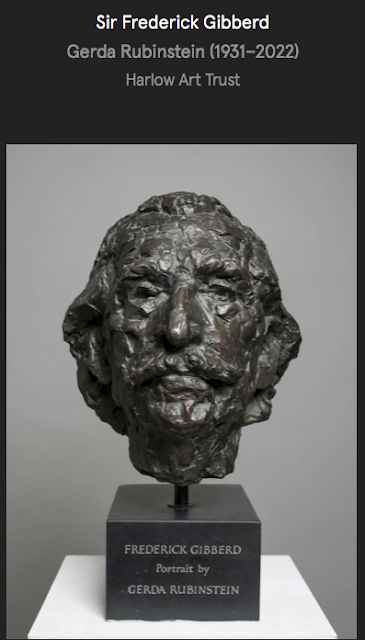I went to London to see my doctor who told me I was still alive, which seemed like good news. So the next day I went for a walk in and around White City, with my boon companion Ashley, flaneur of that parish, more or less. The temperature and the humidity were punishing so we didn’t walk as far or with as much zest as we might have in other circumstances.
Reader, it felt, at first, like walking in the future. There were shiny, fresh-out–of-the-box buildings with no indication of what went on inside them. There was free wi-fi outdoors in public spaces that had lots of places to sit. There were chain restaurants I’d never heard of before - Potager and Dear Grace – and the latter had set up a giant screen outside for those who wanted to watch the cricket. On a different day that would have been me.
In fact there were some buildings I could tell the purpose of; a mighty concentration of places where people lived, developments with names like White City Living, Cascade Apartments, Belvedere Row and the improbable Bowery Apartments. These mostly looked pretty good architecturally, and completely unaffordable.
I’d been to White City once or twice in the past, when I’d had some business or other at the BBC TV Centre. The BBC building remains, but is also converted into swanky flats, though there’s still a naked golden statue of Helios at the centre of the garden. If the sun god isn’t permanent, what is?
Although this White City walk was just a meander, there was a general plan to go and look at (and walk in) the Japanese Garden in Hammersmith Park – which dates from 1910, and was originally part of the Japan-British Exhibition held to strengthen the Anglo-Japanese Alliance. It’s a long story which I won’t tell here, though it's worth noting that White City was then part of Shepherd's Bush, which in many ways it still is.
Photographs from the time show it to have been a wild and complex affair, and it must have required a huge amount of work for what was a very short-lived exhibition.
There were two gardens at the exhibition, The Garden of Peace and the Garden of the Floating Isle. Now there’s only one: ‘The Garden of Peace was converted into a more traditional British public park named “Hammersmith Park”’ – I’m quoting here from the Japanese Garden Society.
I’m surprised, and pleased, by how many Japanese gardens there are in Britain - at least thirty open to the public – from Lowther Castle to the St Mungo Museum of Religious Life and Art, from Dartington Hall to the National Botanic Garden of Wales, and so on. I confess I haven’t walked in all that many of these.
I suppose this prevalence of Japanese gardens may possibly be because the features of a Japanese garden are easy to identify and easy to replicate: like these lanterns in Hammersmith Park, sponsored by various Japanese corporate interests.
There is also a type of Japanese garden called (at least by English speakers) a ‘stroll garden.’ just right for walkers, or meanderers, like me. This one’s in Kew.
In the Japanese Garden in Hammersmith Park on the day I was there, a few homeless people were setting up camp, and a few young women in bikinis were sunbathing but I thought it best not to photograph them.
Adjacent to, or possibly part of, the Hammersmith Park is something called the Wood Crescent Playground: you know, for the kids.
And as we walked around, a moment came when I looked at the mound in the playground (above) and it reminded me powerfully of this other mound in the Jencks Garden of Cosmic Speculation, near Dumfries, (below).
Possibly the heat was getting to me.






































